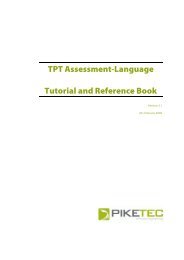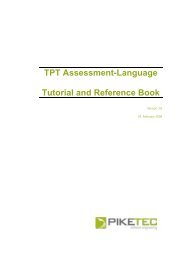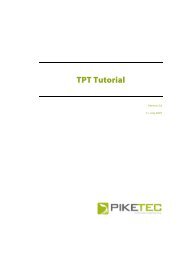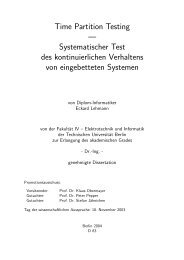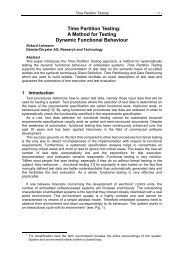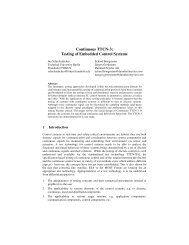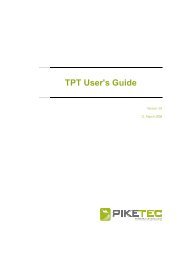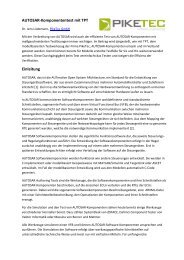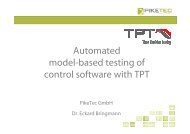TPT User's Guide - PikeTec
TPT User's Guide - PikeTec
TPT User's Guide - PikeTec
You also want an ePaper? Increase the reach of your titles
YUMPU automatically turns print PDFs into web optimized ePapers that Google loves.
<strong>TPT</strong> <strong>User's</strong> <strong>Guide</strong> Page 53<br />
For now, let’s concentrate on the first worksheet, which is named “General”. It contains four<br />
fields that may be filled with information. The following table shortly describes each of them.<br />
Label Semantics<br />
Module name Optional. Takes a name for the generated module.<br />
Custom imports Optional. If include statements are necessary to access the function to<br />
adapt, they must be specified here.<br />
Custom init Optional. If additional statements are necessary to initialize the<br />
function before a test run starts, it can be specified here.<br />
Function call Takes the source code that calls the function under test. The code,<br />
filled in here, will later on be called cyclically during a test run.<br />
The following screenshot shows an example of the worksheet filled out:<br />
Figure 36: Function Specification with the Excel Sheet “General”<br />
The next two worksheets, “Inputs” and “Outputs” both have the same structure, that allows a<br />
user to specify a functions interface variables – or in words of <strong>TPT</strong>: its interface channels.<br />
Figure 37: Interface Specification with the Excel Sheets “Inputs” and “Outputs”



